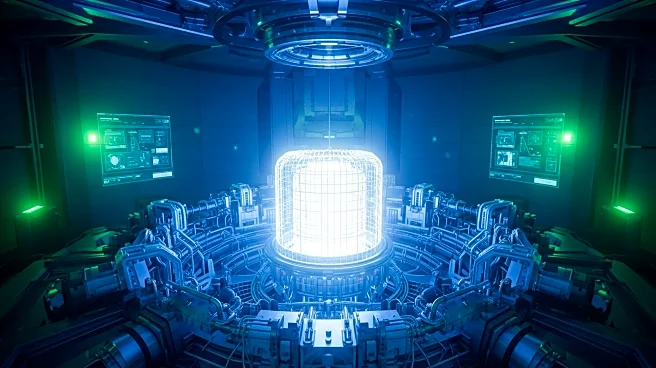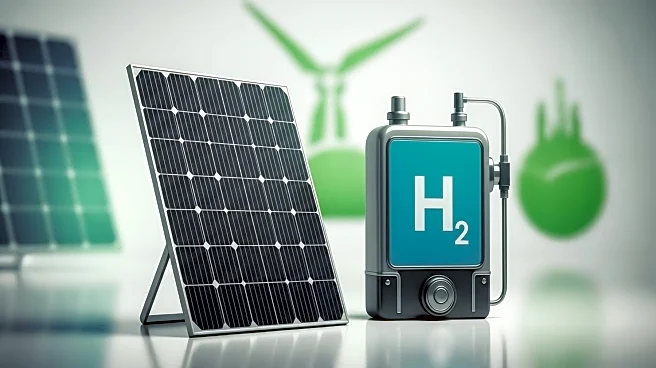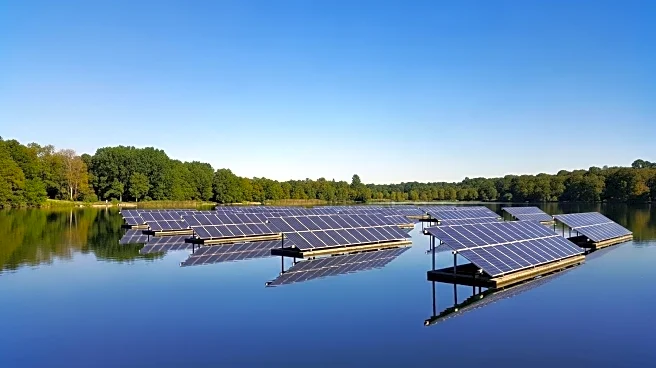What's Happening?
A team of researchers, including Chao Liang, Yiqiang Zhang, Yanlin Song, and Pengwei Li, have introduced tyrosine as an additive to improve the efficiency and stability of quasi-two-dimensional perovskite solar cells. The additive modulates phase composition and optimizes carrier transport pathways, addressing the efficiency-stability trade-off traditionally seen in these solar cells. The process involves dissolving tyrosine in ethanol, introducing hydroiodic acid, and incorporating the resulting crystals into the perovskite precursor solution, which is then spin-coated to form the solar cell films.
Why It's Important?
This development is crucial for the solar energy industry, as it offers a potential solution to the longstanding challenge of balancing efficiency and stability in perovskite solar cells. By enhancing both aspects, the new approach could lead to more durable and efficient solar panels, increasing their viability for widespread adoption. This could accelerate the transition to renewable energy sources, reduce reliance on fossil fuels, and contribute to global efforts to combat climate change.
What's Next?
Further research and testing are expected to refine the process and validate the long-term performance of these solar cells. If successful, the technology could be scaled up for commercial production, potentially transforming the solar energy market. Collaboration with industry partners may also be pursued to integrate these advancements into existing solar panel manufacturing processes.
Beyond the Headlines
The introduction of tyrosine as an additive may inspire further exploration of organic compounds in enhancing solar cell performance. Additionally, the environmental impact of producing and disposing of perovskite solar cells will need to be considered, prompting discussions on sustainable practices in the solar industry.











